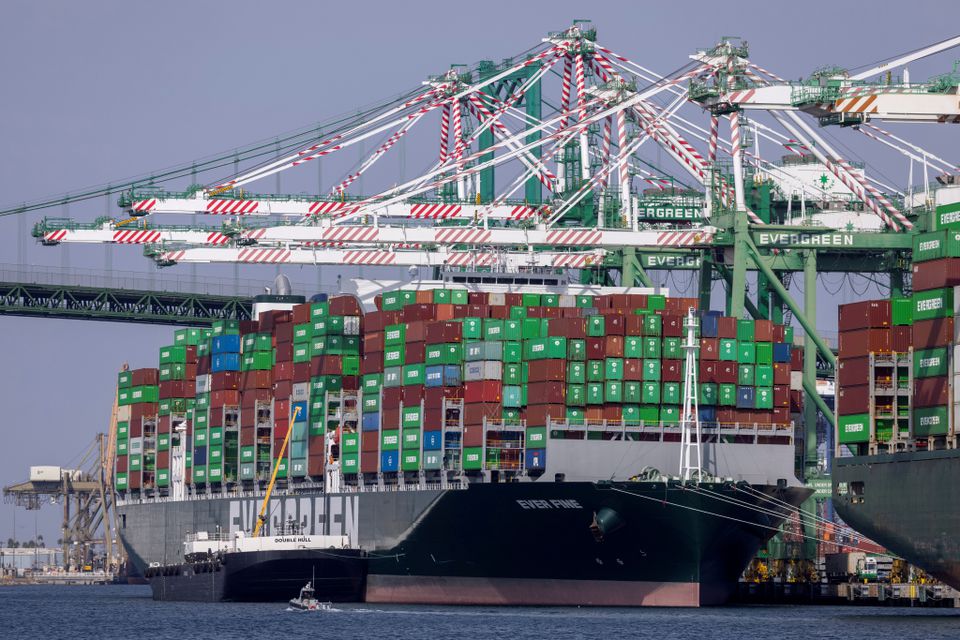The Flying Buttress once glided across the oceans carrying vital commodities like grain to all corners of the world.
Now it bears a different treasure: Paw Patrol Movie Towers, Batmobile Transformers and Baby Alive Lulu Achoo dolls.
The dry bulk cargo ship has been drafted into the service of retail giant Walmart (WMT.N), which is chartering its own vessels in an effort to beat the global supply chain disruptions that threaten to torpedo the retail industry’s make-or-break holiday season.
ALSO READ: Amid supply chain snarls, retailers pitch early holiday shopping.
“Chartering vessels is just one example of investments we’ve made to move products as quickly as possible,” said Joe Metzger, U.S. executive vice president of supply-chain operations at Walmart, which has hired a number of vessels this year.
The aim is to bypass log-jammed ports and secure scarce ship space at a time when COVID-19, as well as U.S.-China trade ructions, equipment shortages and extreme weather, have exposed the fragility of the globe-spanning supply lines we use for everything from food and fashion to drinks and diapers.
ALSO READ: How global supply chains are falling out of fashion
More than 60 container ships carrying clothing, furniture and electronics worth billions of dollars are stuck outside Los Angeles and Long Beach terminals, waiting to unload, according to the Marine Exchange of Southern California.
Pre-pandemic, it was unusual for more than one ship to be in the waiting lane at the No. 1 U.S. port complex, which handles more than half of all American imports.
Other big retail players, such as Target (TGT.N), Home Depot (HD.N), Costco (COST.O) and Dollar Tree (DLTR.O), have said they are chartering ships to deal with the pandemic-driven slowdown of sea networks that handle 90% of the world’s trade.
Or, as Steve Ferreira of shipping consultancy Ocean Audit describes the escalating concern: “Containergeddon.”
ALSO READ: The night before: 5 ways to navigate the pending holiday gift crunch
U.S. retailers’ traditional lifeline from Asia is freezing up due to a resurgence of COVID-19 in countries like Vietnam and Indonesia plus a power-supply crunch in China. The supply snarls coincide with booming demand as consumers spend more on goods than going out, and the festive shopping frenzy nears.
Burt Flickinger, managing director at retail consultancy Strategic Resource Group, said at least 20-25% of the goods stuck on ships were unlikely to make it onto shelves in time for the Nov. 26 Black Friday kickoff for the holiday shopping season, a period when retailers make more than a third of their profits.
ROUTE FOR GREAT PROFIT
The biggest chains are taking matters into their own hands.
In a typical year, Walmart would have moved those toys from China to Los Angeles in hundreds of 40-foot (12-metre) cargo boxes stacked like colorful Lego bricks on gigantic container vessels that serve multiple customers.
But 2021 is far from typical. Incoming cargo at the Port of Los Angeles is up 30% from last year’s record levels. Trucks and trains can’t remove it fast enough, leading to logjams, said the port’s Executive Director Gene Seroka, reflecting the surge in consumer demand.
“It’s like taking 10 lanes of freeway traffic and squeezing them into five,” Seroka said.
Chartered ships that offer valuable cargo space and can sidestep the container terminals play a critical role in this second pandemic holiday season, particularly for time-sensitive goods like Christmas sweaters that won’t sell if they arrive too late.
The Flying Buttress, for example, entered Los Angeles waters on Aug. 21. It got stuck in a queue outside the port before it bypassed clogged terminals and unloaded its goods at a separately operated bulk cargo dock nearby on Aug. 31, according to Refinitiv data and shipping records.



